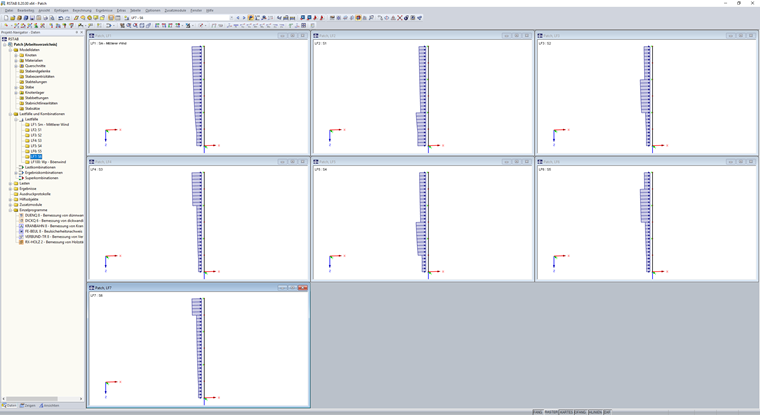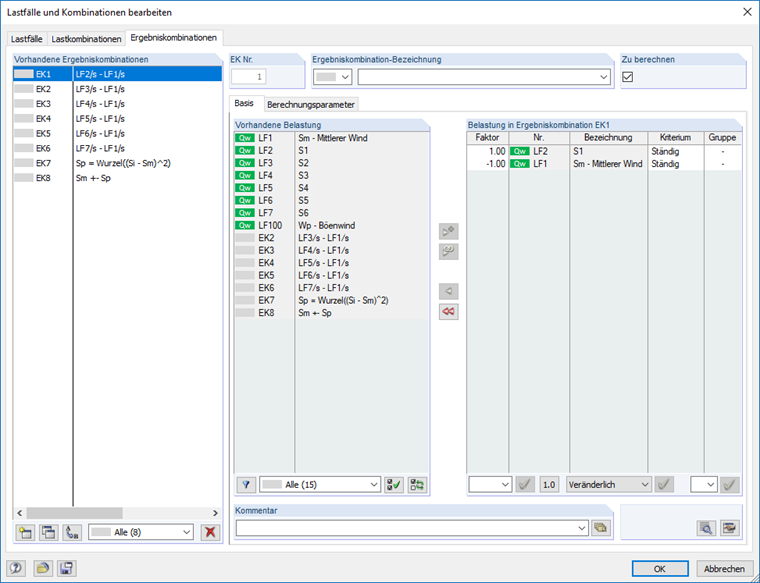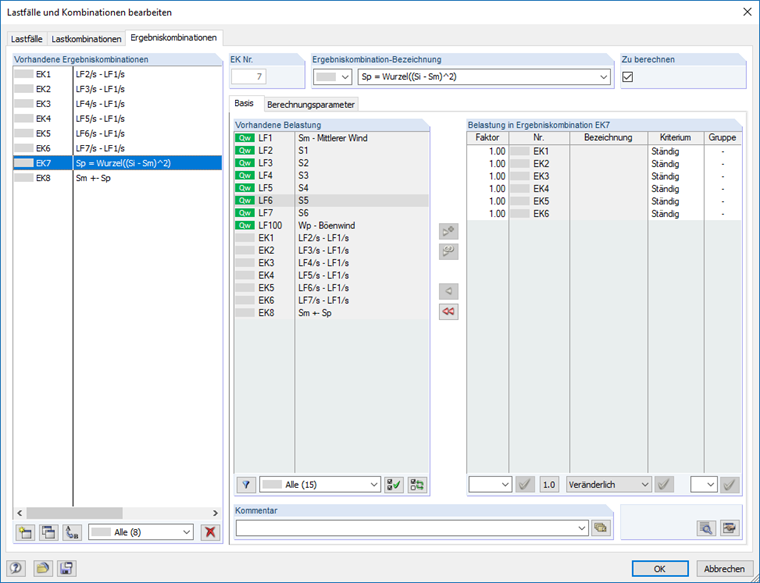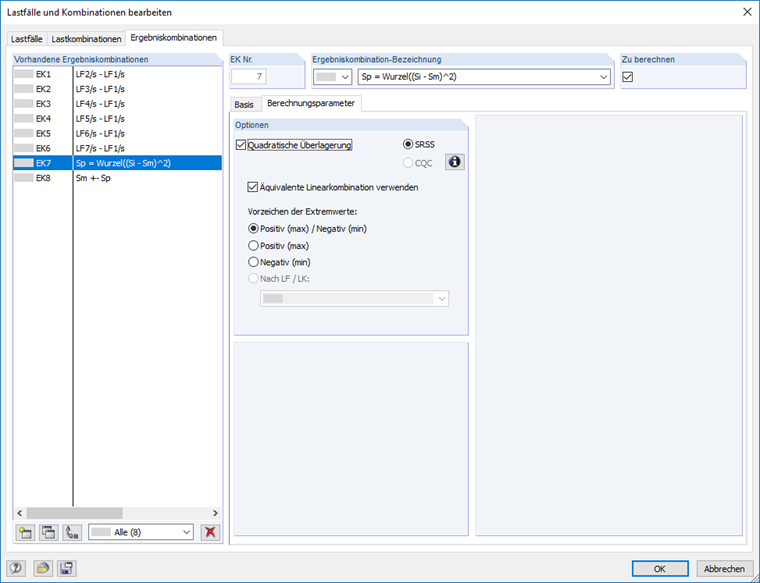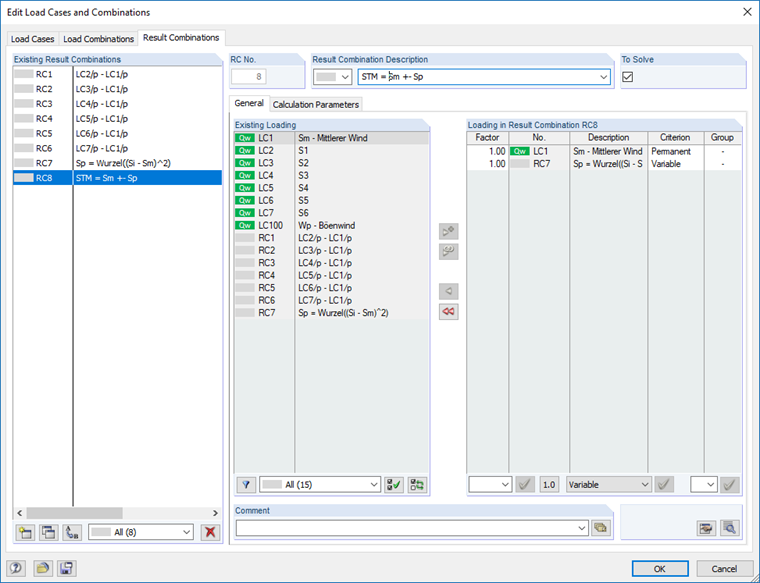Chapter B.4.3 of EN 1993‑3‑1 describes the equivalent static method to analyze the dynamic response to wind turbulence.
[1] To determine the effect of the wind load STM , the internal forces Sm from the mean wind load are combined with the structural response Sp depending on the zone-specific additional loads. The patch loads describe the fluctuating wind components.
[2] Due to the nonlinear structural behavior, the patch loads have to be analyzed together with the mean wind loading in the patch load patterns Si. In this case, it is always necessary to analyze the selected span with the increased patch load and the remaining span with the mean wind loading. In order to determine the pure fluctuation components of the increased patch load related to the mean wind loading, the mean wind load Sm shoud be subtracted from the patch load patterns Si. The structural response Sp is then obtained from the root mean square of the mentioned difference.
|
i |
Number of the actual spans |
|
N |
Total number of load patterns required (actual spans i) |
|
Sm |
Internal forces due to the mean wind loading |
|
Si |
Onternal forces from the i-th load pattern (mean wind loading with partially increased patch loads) |
In RFEM, you can superimpose these two quantities SM and Sp per wind direction in STM via an interaction of load cases and result combinations. In this case, it is assumed that the mean wind load Sm and the patch load patterns Si (the mean wind load Sm with the partially increased patch loads) are in separate load cases. Based on these load cases, the differences from Si - Sm should be generated first by means of the result combinations. The root mean square Sp (with positive and negative component) can then be generated from these difference combinations via another enveloping result combination by activating the SRSS option. Lastly, the loading STM is determined in a final result combination by adding the mean wind load Sm to the root mean square Sp.

